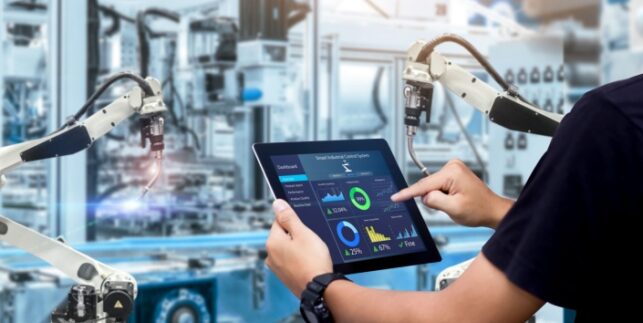
The state of the US manufacturing sector has been a significant focal point for decades. Offshore competition, the ongoing development of new technologies, and the impact of regulation have created a complex landscape that offers both challenges and opportunities. Today, US manufacturing is undergoing rapid change as conditions and manufacturers’ reactions continue to evolve.
Facing Ongoing Supply Chain Challenges
The COVID-19 pandemic sent major shocks through supply chains worldwide, with many industries still not fully recovered. The results of a survey by Deloitte show that 80% of manufacturers have experienced a heavy or very heavy disruption in their supply chain over the past 18 months.
While there has been some relief from the most significant supply chain pressure, it’s clear that US manufacturers will continue to face challenges throughout 2023. For many manufacturers, the primary goal is now to develop more resilient supply chain processes rather than finding a solution for current shortages.
Due to their just-in-time manufacturing processes, many manufacturers experienced a greater impact from supply chain shortages. While production systems based on minimal inventory and closely matching production to demand can provide incredible efficiency, they often faired poorly as extended shortages began.
For some manufacturers, transitioning to a just-in-case production system is a potential solution. Increasing the inventory of raw materials and finished products can provide a buffer against shortages. However, it also increases costs and simply isn’t viable for industries with significant customization in orders and fast turnaround times.
The use of advanced manufacturing technology is another potential solution that is set to build more resilient supply chains without increasing costs. Improved visibility and coordination both within organizations and across supply chains can provide increased agility, allowing for greater flexibility to address supply chain issues in real time.
Major Commitments to US Manufacturing
The US was once the world’s largest manufacturer, having lost that title to China in 2010. However, the US government has committed significantly to increasing US manufacturing through several key pieces of legislation.
The CHIPS and Science Act was signed into law on August 9th, 2022, to boost the competitiveness of US manufacturing. The act provides $280 billion in investments targeting R&D and manufacturing in semiconductors and other critical areas.
The act focuses on implementing advanced manufacturing technologies within US manufacturing to make the industry more efficient and competitive. Manufacturers may be eligible for significant tax credits when investing in advanced equipment for semiconductor and other component manufacturing.
The US government has also set wide-ranging goals for future development through the National Strategy for Advanced Manufacturing. Released on October 7th, 2022, this strategy serves as a guiding document for all levels of US leadership to encourage the development of advanced manufacturing technologies, the workforce to drive the rejuvenated industry, and supply chain resiliency.
The strategy focuses on several key categories, such as semiconductors, bioeconomy, and materials development, but also provides broad goals for manufacturing in general. Sustainability, decarbonization, smart manufacturing, and supply chain transparency are all areas that US policy will seek to grow in the coming years.
Expanding the Scope of Sustainability
Sustainability has long been an important part of manufacturing. However, the scope that sustainability encompasses is growing. Manufacturers are becoming more responsible for the complete lifecycle of their products, higher standards for waste reduction and recycling, and ever-increasing pressure to reduce greenhouse gas emissions.
The Long-Term Strategy of the United States to achieve net-zero emissions is a commitment to reduce greenhouse gas emissions to net zero by 2050. The strategy includes a goal to reduce net emissions by 50 to 52% by 2030, a deadline that is approaching rapidly for US manufacturers.
Some of the most vital elements of the strategy involve the decarbonization of electrical generation and the implementation of electric or other alternative fuel transportation. Within manufacturing, there is a significant focus on reducing energy waste. In many cases, the right solution can enable significant energy waste reduction while still using the same processes and technologies.
Manufacturers must also contend with materials emissions. Greenhouse gas emissions arising from burning fuel, chemical processes, or indirectly from electricity used are just part of the picture. To truly reach net zero, manufacturers must account for upstream and downstream emissions related to the production of raw materials and the life cycle of finished products.
This can create traceability challenges that only advanced manufacturing solutions can overcome. Improved process visibility and supply chain transparency are vital to building an accurate model of true lifecycle emissions for any product.
Industry 4.0 Adoption
US manufacturing is undergoing a major transition as various new technologies are changing every facet of factory floors. These changes are so significant that the ongoing evolution has been labeled the fourth industrial revolution, or Industry 4.0.
The drive for greater efficiency and productivity to remain competitive is pushing manufacturers to derive maximum value from all resources. That includes existing processes and machines, the skillsets of their human resources, and raw materials and energy.
The implantation of Industry 4.0 technologies lets manufacturers achieve all of those goals. Real-time monitoring and analysis, work management tools, IoT connectivity, advanced automation, and other solutions let manufacturers make the most of all available resources.
Digitalization now lets manufacturers leverage data in ways that weren’t possible before. Analysis and insights can be made available instantly rather than for review after the fact. Manufacturers can now monitor every aspect of production at once and have the tools they need to take action on this new level of insight into their process.
Take Part in the US Manufacturing Renaissance
While there are many challenges to overcome, US manufacturing is now at the beginning of a renaissance driven by advanced manufacturing technology and public and private investment. Your operations can join in this progress with Matics Real-time Operational Intelligence (RtOI).
Matics RtOI is a comprehensive solution that lets manufacturers enjoy the full benefits of digitalization and Industry 4.0 advancements. Achieve complete visibility, improve productivity, and maintain tighter control over your process with the data, analysis, and work management tools you need. Reach out today for a demo to see how our solution can revolutionize your factory floor.





